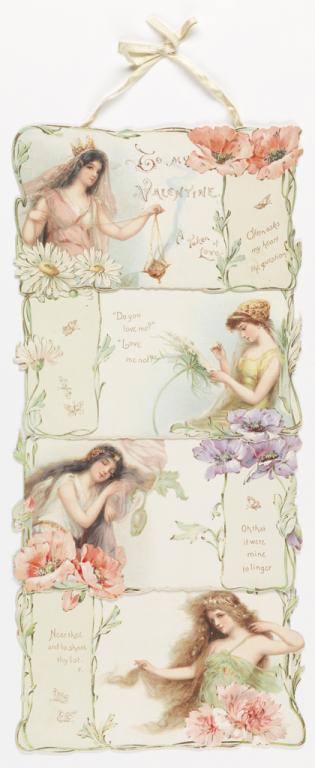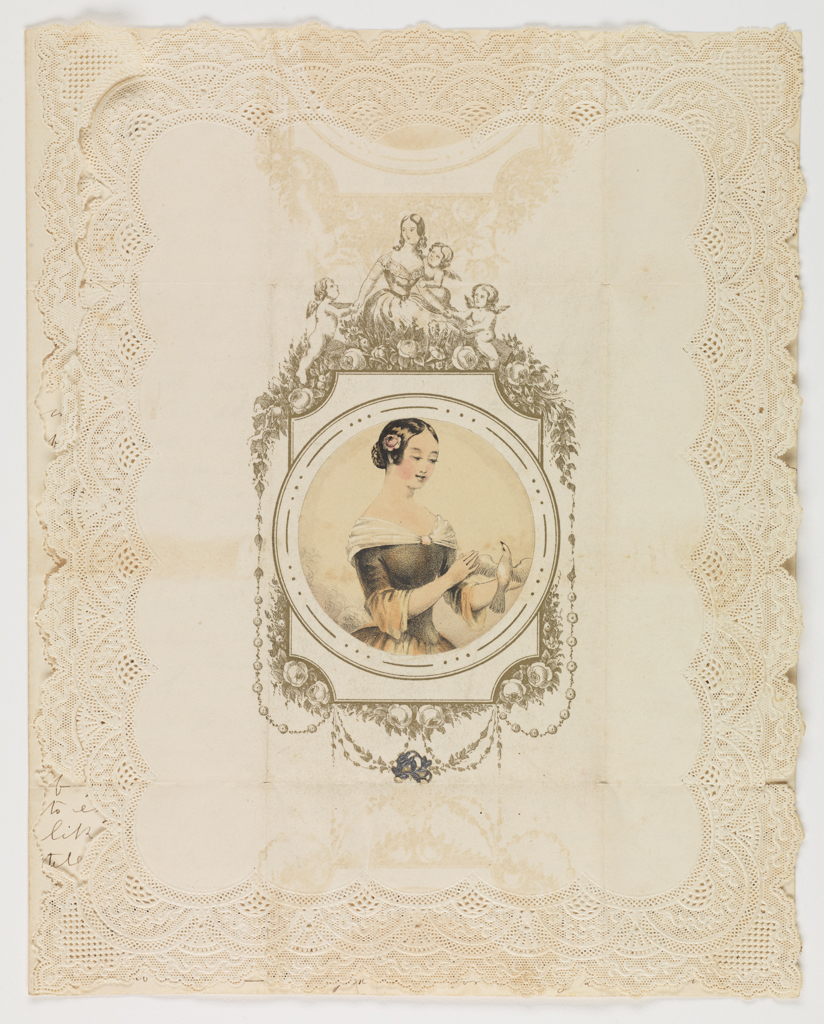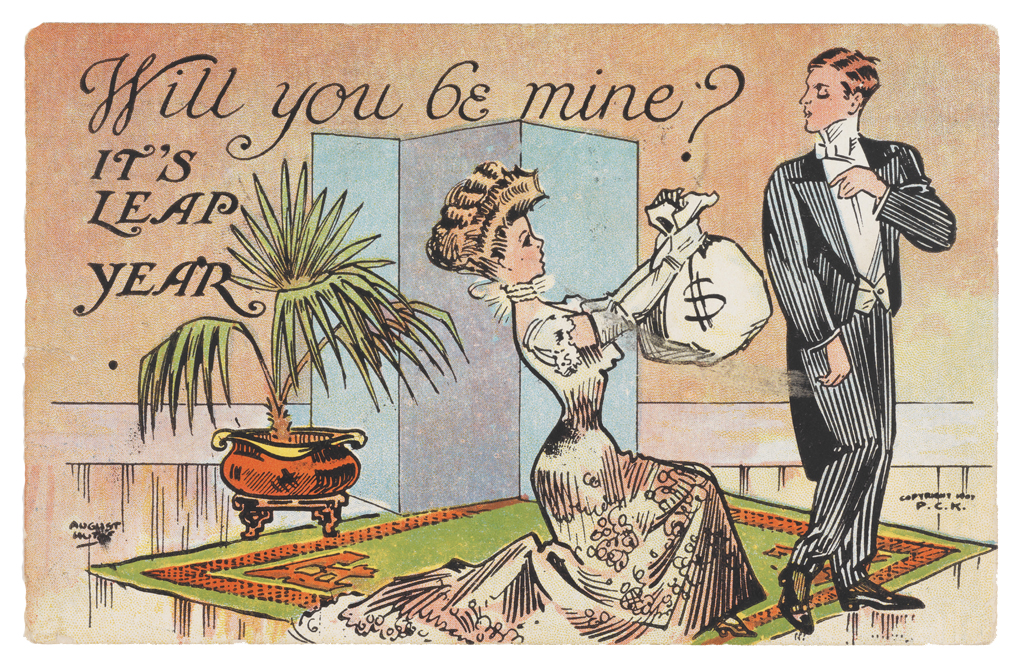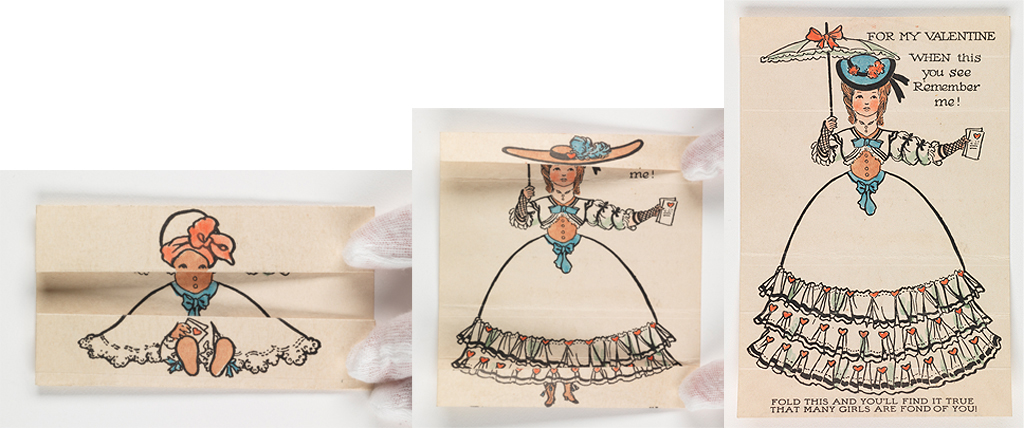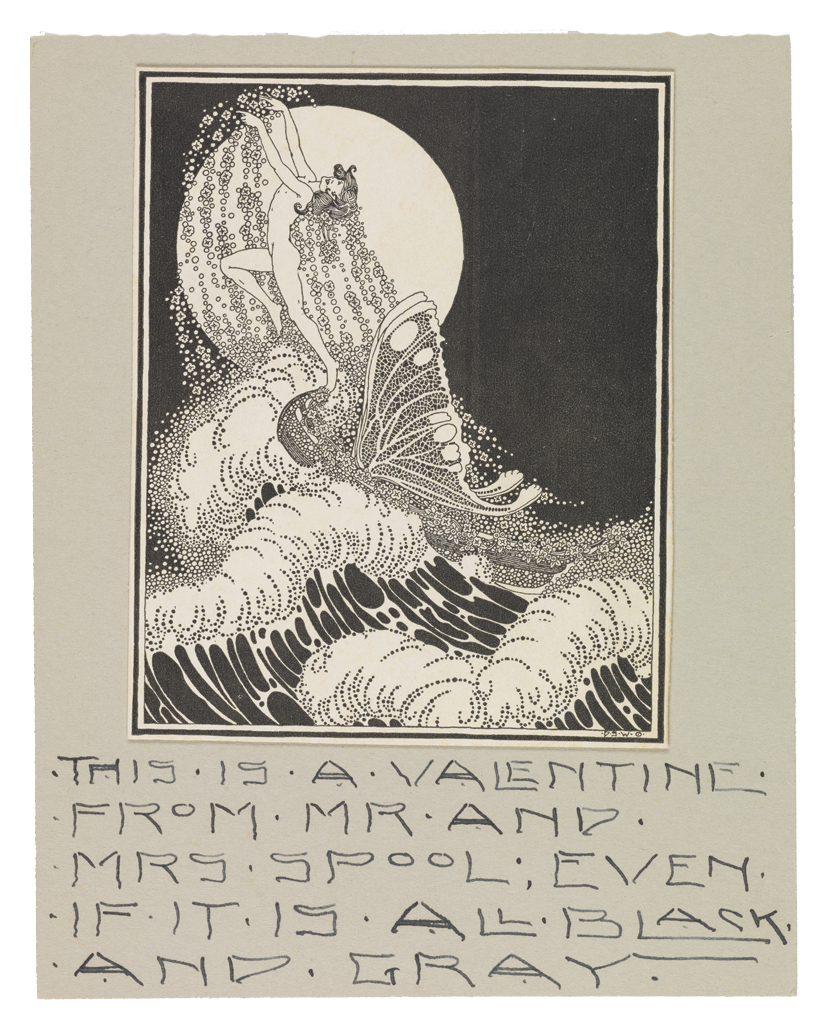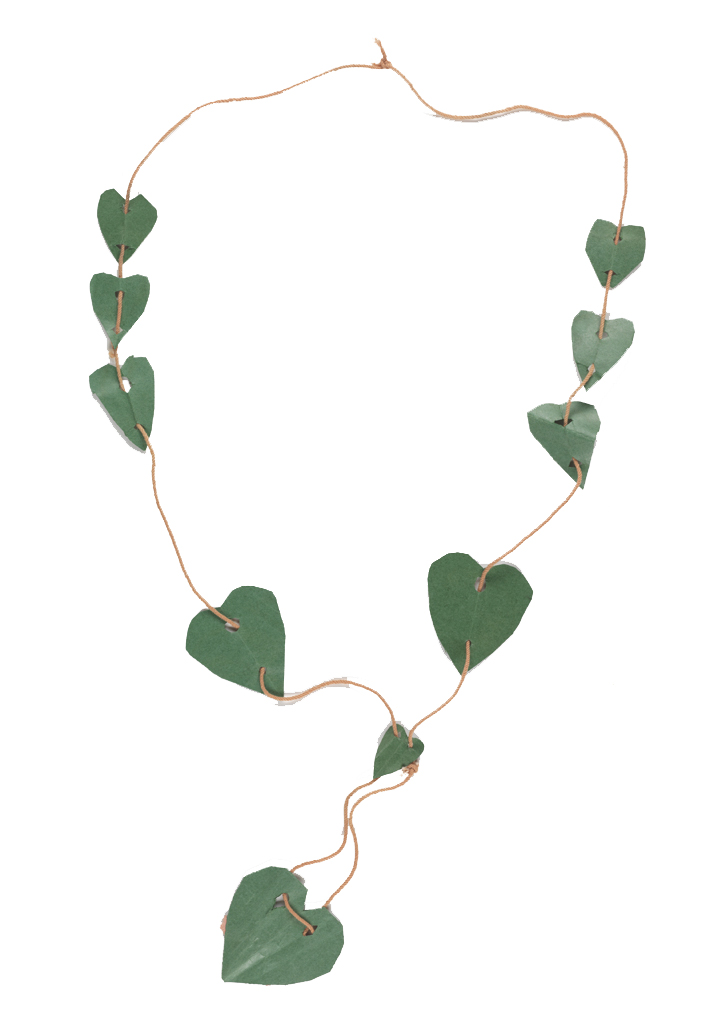Although the origin of Valentine's Day is a mystery, February 14th has a long history as a day for friends and sweethearts to exchange tokens of affection. By the end of the eighteenth century, improvements in printing technology and lower postage rates made Valentines affordable, and ready-made cards began to compete with handwritten notes.
Valentines became so popular in the United States that printed cards were being mass-produced by the 1840s. The first paper Valentines featured real lace, floral decorations, and ribbons.
The Victorians took the fancy Valentine to a new level, and lacy cards dripping with silk, fringe, and tassels became the rage. This beautifully lithographed Valentine is a good example. The Art Nouveau styling features a fairy princess surrounded by poppies and daisies (she loves me, she loves me not?).
Second in sales only to Christmas cards, printed Valentines are now competing with digital greetings such as e-cards.

